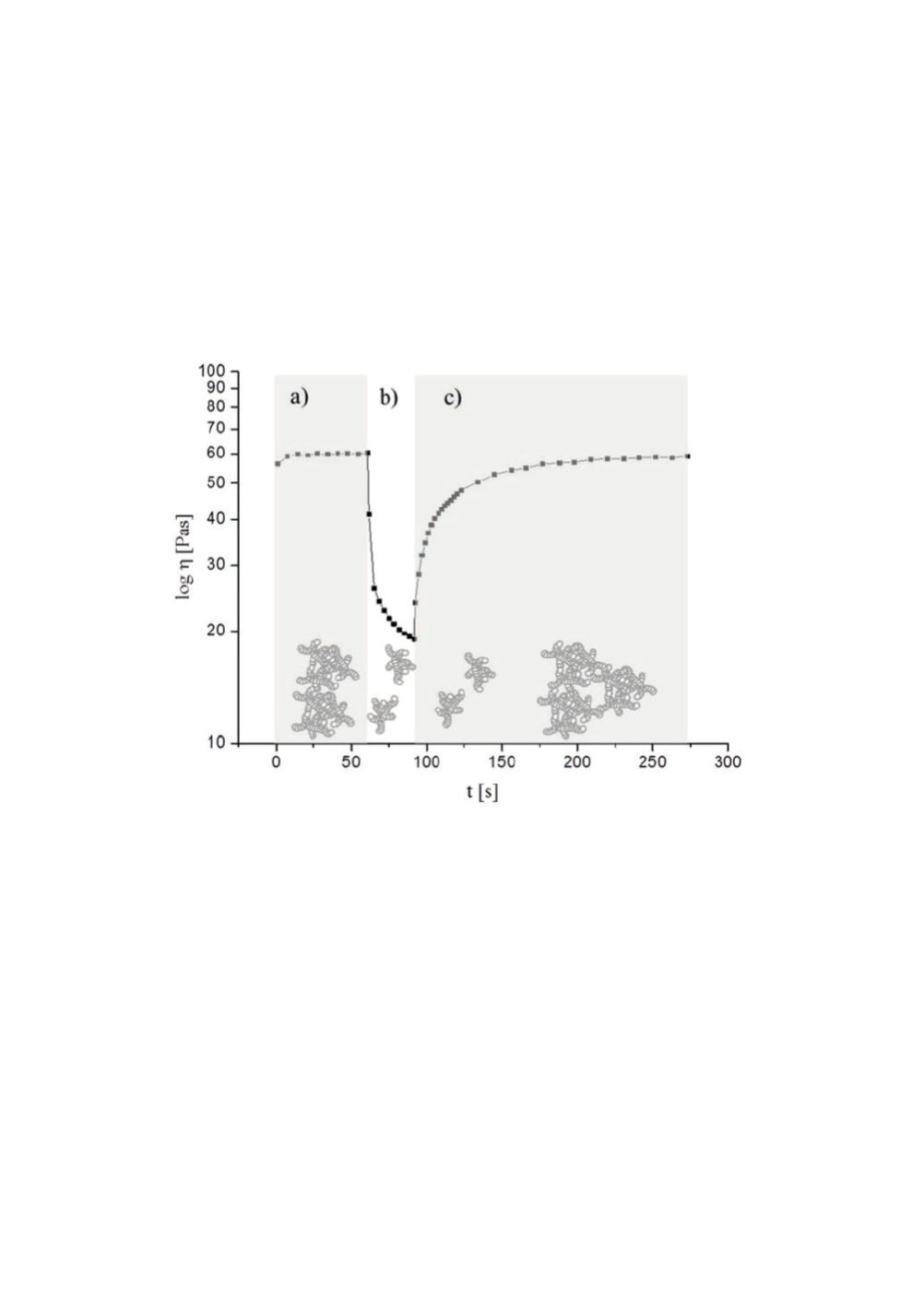

Rheology Control
Mixing pyrogenic silica into fluid causes a strong increase in viscosity and can result
even in gel formation, depending on the silica loading. This effect is used to control the
flow properties of sealants, adhesives, and coatings [30]. The silica improves
application properties like extrusion rate, sag resistance, prevention of pigment
sedimentation, and paintability. The increase in viscosity comes along with a non-
Newtonian behaviour such as shear thinning and thixotropy. This property is depicted
in Fig. 15, which shows a thixotropy experiment simulating storage (low shear rate; a),
application (high shear rate; b), and structure recovery (low shear rate; c).
Figure 15:
Thixotropy experiment of Epikote 828 containing 5 wt% pyrogenic silica
(SSA 200 m
2
/g); block a): 0.5 s
-1
, block b) 500 s
-1
, block c) 0.5 s
-1
and an illustration of
the evolution of the internal silica network structure.
In block a) of the thixotropy test, a low shear rate of 0.5 s
-1
is applied. This simulates a
situation of low mechanical impact like storage where the internal rest structure is only
slightly disturbed. The high viscosity is a result of a percolating particle network which
effectively immobilizes the fluid within the network. Instantaneous increase of the
shear rate to 500 s-
1
(block b) induces degradation of the network structure and reduces
the immobilized fluid volume. The network degradation is reflected by strong shear
thinning. The high shear rate phase is intended to simulate the application of a
formulation like pumping, spraying, or painting. In the subsequent low-shear phase (0.5
s
-1
; block c) the structure recovery of the particulate network is monitored. Proper
choice of the silica grade and adaption of the silica loading allows tailoring of the degree
shear thinning and the rate of structure recovery according to the requirements of the
corresponding application.
120


















